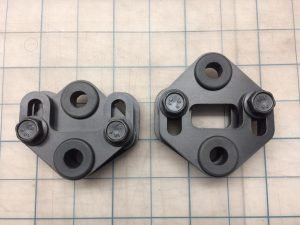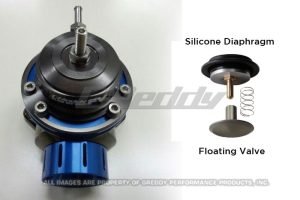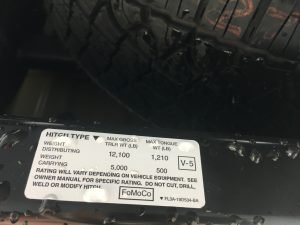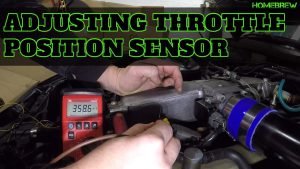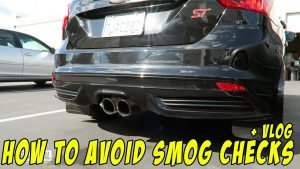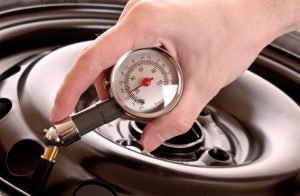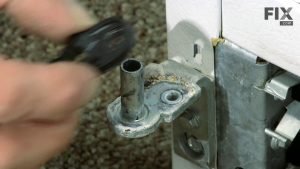
Contents
DIY Brake Pad Replacement: A Step-by-Step Guide for Beginners
Replacing your brake pads might seem daunting, but with the right tools and instructions, it’s a manageable DIY project that can save you money. This guide provides a step-by-step process for beginners, focusing on safety and efficiency. Remember, safety is paramount. If you’re uncomfortable with any step, it’s best to consult a professional mechanic.
SEO Keywords: DIY brake pad replacement, brake pad replacement guide, how to replace brake pads, brake maintenance, car maintenance, beginner car repair
Before You Begin: Preparation is Key
Before you even touch your car, gather the necessary tools and materials. You’ll need:
- Jack and jack stands: Crucial for safely lifting your vehicle. Never work under a car supported only by a jack.
- Wheel chocks: To prevent the car from rolling.
- Lug wrench: To remove your wheels.
- Socket wrench set: With the correct size sockets for your caliper bolts and other fasteners.
- C-clamp or caliper compression tool: To compress the caliper piston.
- Penetrating lubricant (like PB Blaster): To help loosen rusted bolts.
- Wrench for caliper bracket bolts (if applicable): Some brake calipers require removal of the bracket.
- Gloves: To keep your hands clean.
- Safety glasses: To protect your eyes from flying debris.
- New brake pads: Ensure you purchase the correct pads for your vehicle’s make, model, and year.
Find a safe, level working area. A well-lit garage or driveway is ideal. Consult your vehicle’s owner’s manual for specific instructions and torque specifications. This is crucial for safe and proper operation.
Step-by-Step Brake Pad Replacement
1. Secure the Vehicle:
- Engage the parking brake firmly.
- Place wheel chocks behind the wheels that are opposite the ones you’re working on. This prevents the car from rolling.
- Carefully jack up the vehicle and securely place it on jack stands. Never work under a car supported only by a jack.
2. Remove the Wheel:
- Use your lug wrench to loosen the lug nuts on the wheel you’ll be working on. Do not remove them completely yet.
- Once loosened, jack up the car enough to remove the wheel entirely.
- Carefully set the wheel aside.
3. Access the Brake Caliper:
- You’ll now see the brake caliper clamped around the rotor. Depending on your vehicle, you might need to remove the caliper bracket bolts first before you can access the brake pad retaining pins or clips.
- Carefully inspect the setup before attempting to remove anything.
4. Compress the Caliper Piston:
- Using a C-clamp or caliper compression tool, slowly and steadily compress the caliper piston. This creates space for the new, thicker brake pads. Do this gradually to avoid damaging the piston seal or ABS sensor.
5. Remove the Old Brake Pads:
- Once the piston is compressed, you should be able to remove the old brake pads. They are typically held in place by clips or pins. Carefully inspect how they are attached before attempting removal.
- Inspect the brake rotor for excessive wear or damage. If the rotor is significantly worn or scored, it may also need replacement.
6. Install the New Brake Pads:
- Carefully install the new brake pads, ensuring they are properly seated in their designated slots. Follow the instructions that came with your new brake pads.
7. Reassemble Everything:
- Reinstall the caliper, making sure it’s properly seated.
- Tighten the caliper bolts to the manufacturer’s specified torque.
- Replace the wheel and tighten the lug nuts in a star pattern to ensure even pressure.
- Lower the vehicle carefully.
8. Final Checks:
- After lowering your vehicle, check your work. Ensure the caliper is properly secured, the wheel is tight, and there are no loose parts.
- Pump the brake pedal several times to engage the new pads. If the pedal feels spongy or goes all the way to the floor, there might be air in the brake lines and you should consult a professional mechanic.
- Test drive the car cautiously to ensure the brakes function correctly.
Common Mistakes to Avoid
- Not using jack stands: This is extremely dangerous.
- Forgetting to compress the caliper piston: This prevents the new pads from fitting.
- Over-tightening bolts: This can damage the caliper or other components.
- Not checking the brake fluid level: After replacing the pads, check and top off the brake fluid if necessary.
- Ignoring worn rotors: Worn rotors can compromise braking performance.
When to Seek Professional Help
If you’re uncomfortable with any of these steps, always seek professional help from a qualified mechanic. Brake system safety is crucial, and it’s better to be safe than sorry. This guide is for informational purposes only and should not be considered a substitute for professional advice.
FAQ
Q. What tools will I need to replace my brake pads?
A. You’ll need a basic set of tools, including a jack and jack stands (crucial for safety!), lug wrench, wheel chocks, socket wrench with appropriate sockets, possibly a C-clamp (depending on the caliper design), pliers, brake cleaner, and possibly a wire brush to clean caliper surfaces. Always refer to your vehicle’s specific repair manual for the exact tools needed as they can vary significantly between car models and makes.
Q. Is it safe to replace brake pads myself?
A. While it’s possible to replace brake pads yourself, it’s crucial to understand that brakes are a critical safety system. If you’re uncomfortable working on your car’s braking system or lack mechanical aptitude, it’s best to have a professional mechanic do it. Improperly installed brake pads can lead to serious accidents.
Q. How do I know when my brake pads need replacing?
A. There are several indicators. You’ll likely hear a squealing noise when braking, this is often a warning built into the pads. You might also feel a vibration in the brake pedal or notice a significantly longer braking distance. Visually inspecting the pads is also a good idea; worn pads will be very thin, with little to no friction material remaining.
Q. What should I do if I accidentally compress the brake caliper piston without retracting it properly?
A. Compressing the piston without using the proper method (usually turning it with a special tool or using a C-clamp slowly and carefully) can damage the caliper’s seals and lead to brake fluid leaks. If this happens, you should consult a repair manual or professional mechanic to properly retract the piston and assess any damage. Do not attempt to operate the vehicle with a damaged brake system.
Q. My brake pads are difficult to remove. What should I do?
A. If the brake pads are stuck, try using a penetrating lubricant like PB Blaster on the caliper pins or slider pins. Allow it to soak for a while before attempting to remove the pads again. If this doesn’t work, you might need to use a hammer and punch (gently!) to tap out the pins, but be extremely cautious not to damage surrounding components. Again, consult your repair manual for the correct procedure.
Q. What should I do with the old brake pads?
A. Used brake pads contain materials that are harmful to the environment. Properly dispose of them according to your local regulations. Many auto parts stores will accept used brake pads for recycling.
Q. How do I know if I’ve replaced the pads correctly?
A. After replacing the brake pads, carefully inspect your work, ensuring the pads are seated correctly in the caliper and that the caliper is properly reassembled. Pump the brake pedal several times to ensure the brakes are functioning correctly. A firm brake pedal is a good indicator. However, a final test drive is advised, but only in a controlled, safe environment and at low speed, to fully test the new brakes before driving at normal speeds.
Related Articles
Exploring the Differences – Limited Slip vs Posi Traction – Which is Right for Your Car?
Introduction When it comes to enhancing your car’s performance and handling, the choice between Limited Slip and Posi Traction differentials is …
How do I know which radiator cap to buy?
When it comes to choosing the right radiator cap for your vehicle, making an informed decision is crucial. The radiator cap plays a crucial role in ma…
Why is my radiator building up too much pressure?
Excessive pressure in your radiator can be a cause for concern as it can lead to potential damage to your heating system. If you have noticed that the…
Affiliate Disclosure: As an Amazon Associate, I earn from qualifying purchases made through links on this site.

